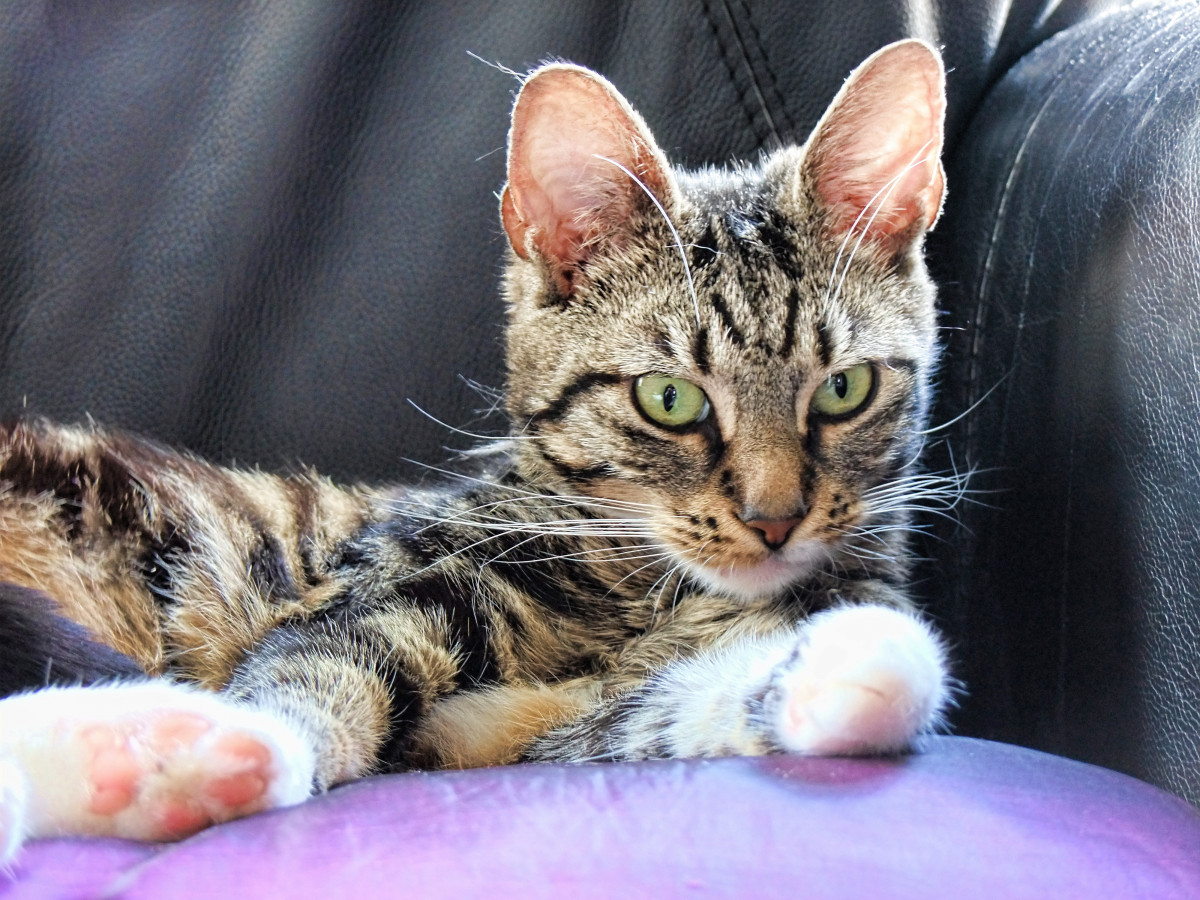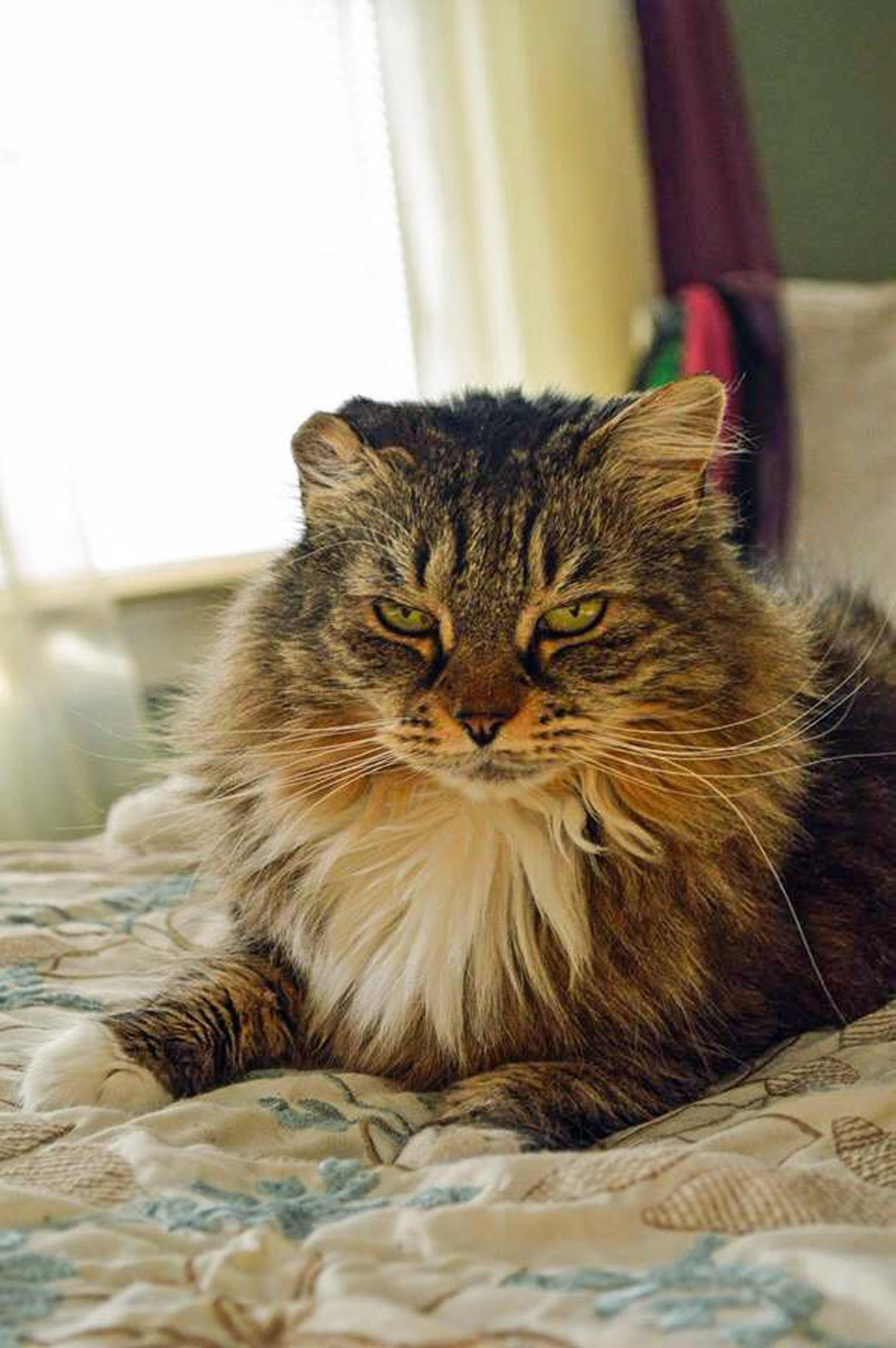
Understanding the Notion of Territory for Cats
A territory is a space that has limits, and that is occupied permanently or not by an “owner” for one or more given uses. The cat gives particular importance to its territory.
Why and how does the cat arrogate rights over a living space? Let’s see closer in this post.
Definition of the notion of territory for the cat
The domestic cat has colonized almost all the ecological niches of the world except Antarctica. It adapts to habitats and climates that meet its physiological needs.
If the living environment offers the necessary resources for its survival and reproduction, the cat chooses a space that it defines according to its needs. The territory must provide the animal:
– shelters to protect itself from bad weather, to hide, to give life and raise its young;
– sufficient food;
The territory is divided into activity zones:
– A resting area, including hiding places for the street or hound cats, or a clean and comfortable sleeping place for the pet cat.
– An activity zone: this is usually a hunting or exploring ground or a meeting place for cats with access to the outdoors. For indoor cats, the area is a place to socialize, feed, observe, and play. If the cat’s activity area is too small and too lacking in stimulation, the cat’s well-being and health are compromised.
– An elimination zone: this is only true for indoor cats. It must imperatively be far from the feeding area for hygienic reasons. Be aware that outdoor cats that do not use a litter box eliminate where they want, never in the same places, but they urinate near places of passage and prefer loose soil for excrement.
Territorial behaviors of cats
To delimit its living space, the cat adopts territorial behaviors: it occupies its territory, patrols it, marks it, shares it, defends it, and sometimes abandons it.
Cat: sharing its territory
Territorial behaviors change depending on the species. The particularity of the territorial behavior of the cat is that it is spatiotemporal:
– it has schedules during which it wants to occupy it exclusively for a specific activity;
– during certain times of the day, it admits that other individuals occupy it, and it gives them its place.
Domestic cats are quite social and can live in a community without problems if there are enough resources.
Intrusion into the cat’s territory
There are several methods to prevent trespassing by neighborhood cats. For instance:
– having a dog to watch and scare off intruders;
– putting a microchip cat flap to prevent other cats from entering the house
– Fencing the garden;
– do not feed your cat outside;
– Do not leave kibble out in the open;
– not letting your cat out at night to avoid fights.
For stray cats looking for food, it is advisable to feed them at the edge of the territory in the evening to prevent them from visiting your property and getting sick, which could affect the health of your own cat. Avoid allowing them to have access to sleeping areas.
Co-habitation of cat and owner

Territorial behavior can be a source of damage in the home because some pet cats need to mark their territory:
– Territorial marking is a means of communication: the messages are olfactory and visual, and they must be visible.
– This is explained by the fact that the cat shares a part of its territory and leaves messages to its congeners (rivals, sexual partners, friends) which must resist the external climatic conditions.
– The pheromones contained in the facial glands, the sweat glands of the toes, and the urine are the information left for his congeners.
Urine marking is particularly problematic because urine is composed of odorous molecules that are resistant to our cleaning products.
Urine marking leaves olfactory and visual traces because its acidity makes it penetrate all materials except glass and ceramics.
Caution: urine should be cleaned immediately with a cleaning product containing enzymes, such as laundry detergent. Rinse and dry to prevent the urine from penetrating and damaging the substrate and leaving a visual mark (which you may not see, unlike the cat).
Factors that influence the marking are:
– The hormonal status of the cat: an unspayed animal leaves scent marks for a sexual partner.
– The number of cats sharing the territory: even if you only have one cat, other cats are likely to visit the garden and the house in your absence without you noticing, especially at night. Urine marking is a means of communication that cats use with each other, regardless of whether they are friends or enemies.
– Stress: The source of stress in cats is a change considered threatening or irritating and affects the cat’s positive perception of its territory. Health problems can disrupt this perception: the cat easily associates external events with negative sensations caused by pathologies, creating insecurity in its living space.
– A loss of reference points: cleaning with no-rinse products or irritating cleaning products, perfuming the house with synthetic molecules can destabilize the cat, which is very sensitive to irritating agents: its territory is polluted and harmful. This is particularly true for cats confined in apartments that cannot escape from it. Aggressive or marking behaviors may appear.
Trees and garden furniture are the main targets. You can protect your trunks by sticking adhesive bandages on them and covering the area with a sheet of cork, if possible blank, well fixed. This will allow the cat to continue marking the area without damaging the trees. Some cats avoid areas sprayed with repellent.
To protect your furniture, you must provide the cat with an alternative place: a large, stable cat tree that you sprinkle with catnip (Valerian Officinalis roots or Nepeta Cataria flowers). Place his pillow or plaid on the platform.
Note: block access to the couch or chair by surrounding it with objects that make it inaccessible: wedge the backrest against a wall, place a newspaper rack on one side and a side table on the other, or cover it with a slipcover. The important thing is to make the scratch marks invisible, so they don’t come back.
Cats: do they change territory?
Adoption, moving, destruction, and rejection from a community are all events that cause the loss or change of territory:
– The place of birth conditions in part the future life of the cat. Kittens born to a mother living on the street or in the wild, without attachment to humans, will not have the same fate as those born in a human home.
– Pet cats born in a home usually experience an initial detachment upon adoption. They are confronted with and undergo a change in living arrangements at a very young age. The owner takes over from the mother by offering them protection, affection, and food. It is only when they reach sexual maturity that they will set up territorial strategies. Pet cats are often forced to change territories when they move, but they adapt very well.
– Pet cats that were born and lived outdoors will have difficulty adapting to apartment life. A natural territory has an incomparably richer activity zone than an apartment. This change in the quality of the territory is a source of discomfort.
Concerning stray cats, which do not leave their birthplace at a young age, their territory gravitates around this center and expands as the cats become autonomous:
– These cats often have to integrate into an already formed community and find their place there or leave.
– In the latter case, it is the mother who drives away her sexually mature sons.
– Sometimes, the street cat is forced to abandon its space because the living environment is affected by changes that transform it, impoverish it, and make it dangerous.
– If it cannot cope or has no choice, it will fall victim to diseases caused by fights for survival and malnutrition and will lose its life. A male cat without a territory has a life expectancy of two years.
For pet cats and pedigree cats born in a human home, the human home is the center of their history, the guarantor of their well-being and survival. It is his territory. The notion of territory is then not the same as for human societies, where the territory is an emotional and cultural investment.
We often read that the cat is more attached to its territory than to its masters. This is not true of pet cats and pedigree cats and has become widespread because some cats return to their former homes after moving, for example.
In fact, this is rather rare and mainly concerns the cat that was born and has always lived freely in a fairly large territory of several square kilometers where it has relationships with other people. These are often outdoor cats from the street and adopted by humans who share their territory.





